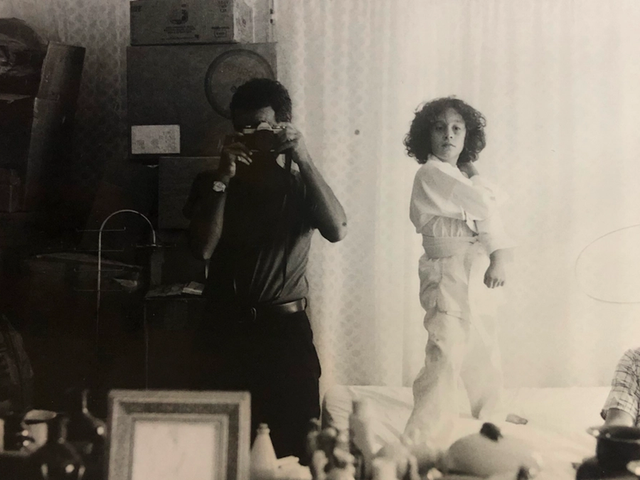Robert Adanto’s film “Pearls on the Ocean Floor” is also a survey of art produced by women against the grain of a dominant political system—but this time it’s the theocratic regime in power since Iran’s Islamic revolution of 1979.
However, while Lynn Hershman Leeson sets out a progressive historical narrative, in Adanto’s film, the waters are a little muddier. The women artists here are as much in conflict with a dominant ideology as those in Hershman Leeson’s study. But Adanto’s film isn’t born out of direct personal experience and while for the American women there is little sense of dislocation from their own land, most of the Iranian women speak of a sense of statelessness and of being silenced by not being able to create their own history. They are often equally uneasy at the specifics of their exile in—predominantly—the US, which for many must be held accountable for its role in much that has occurred in Iran’s history, from the 1953 coup which overthrew the democratically elected government of Mohammad Mossadegh, to its sponsorship of Iraq in the Iran-Iraq war, which in turn stifled much opposition inside Iran to the rule of Ayatollah Khomeini.
For Portland-born artist Taravat Talepasand: “Growing up Iranian within America was arduous and awkward. We had little consciousness of assimilation, because we were in denial of our permanence in America. American individualism and Iranian deference to tradition were irreconcilable.”
The film embraces many artist (and some academic) interviewees but, for the vast majority of the women, there is unity in their condemnation of their role within the Iranian regime and much of the work is predicated on reactions to the law that requires women to cover up when outside. There are exceptions, however. Haleh Anvari points out that the black chador (the head and body covering cloak) was traditionally used for mourning or for “formal occasions” at the mosque. Her pictures show Iranian women covered by brightly coloured fabrics. She says: “I wanted to deconstruct the black and show you…how incredibly colourful Iranian women are. If you go to Iran they are incredibly well-groomed, they are very beautiful and incredibly sexy.”
It is comments such as this that are both the film’s strength and its weakness. It’s a statement crying out for a counter comment that could try to get to the heart of an observation replete with contradiction. But that may be what Adanto hopes to achieve: dialogue outside of the film, rather than mere didactics.
The editing also leaves one a little disoriented. Many artists are interviewed, but the intercutting between their comments means one often wishes for a longer sequence focusing on one artist. But this is a valuable archive with a compelling subject—hopefully the full, unedited interviews will be made available as a resource.
o “Pearls on the Ocean Floor” will screen at the Museum of Fine Arts, Boston on 16 January. More details at www.pearlsontheoceanfloor.com
Originally appeared in The Art Newspaper as 'Going against the grain in Iran'


